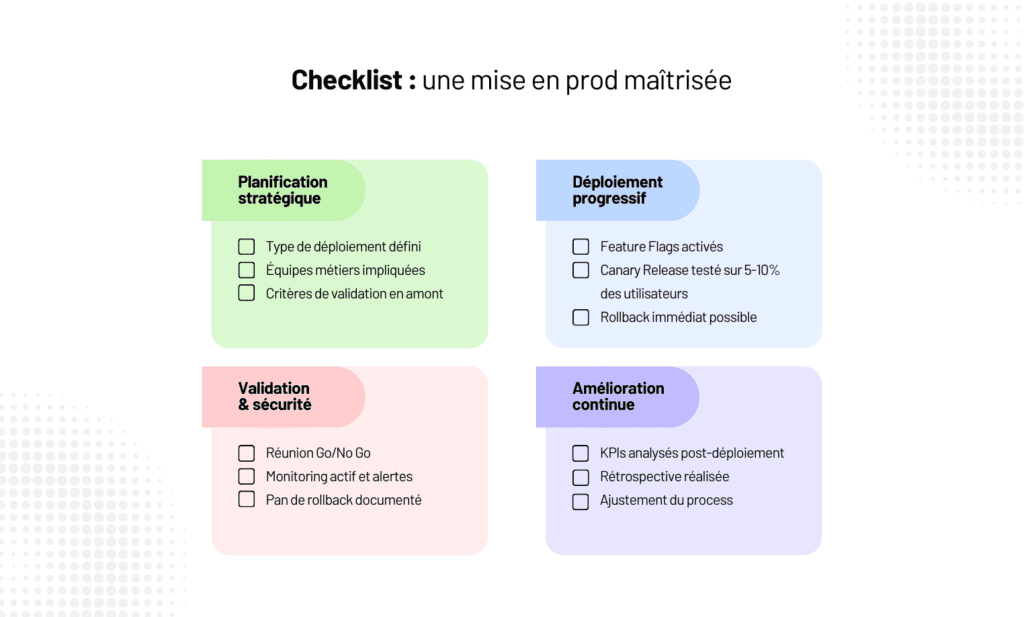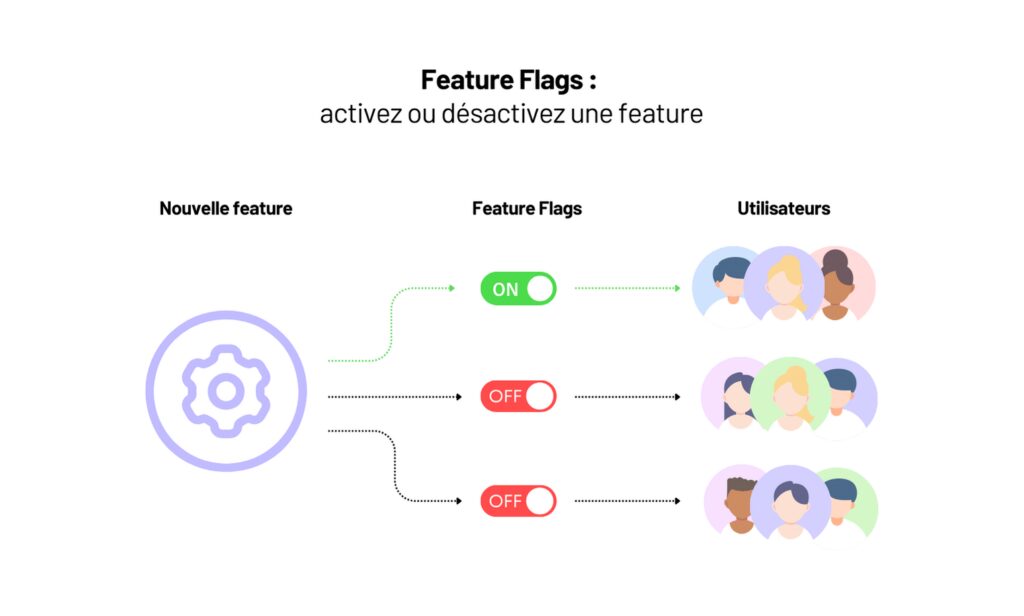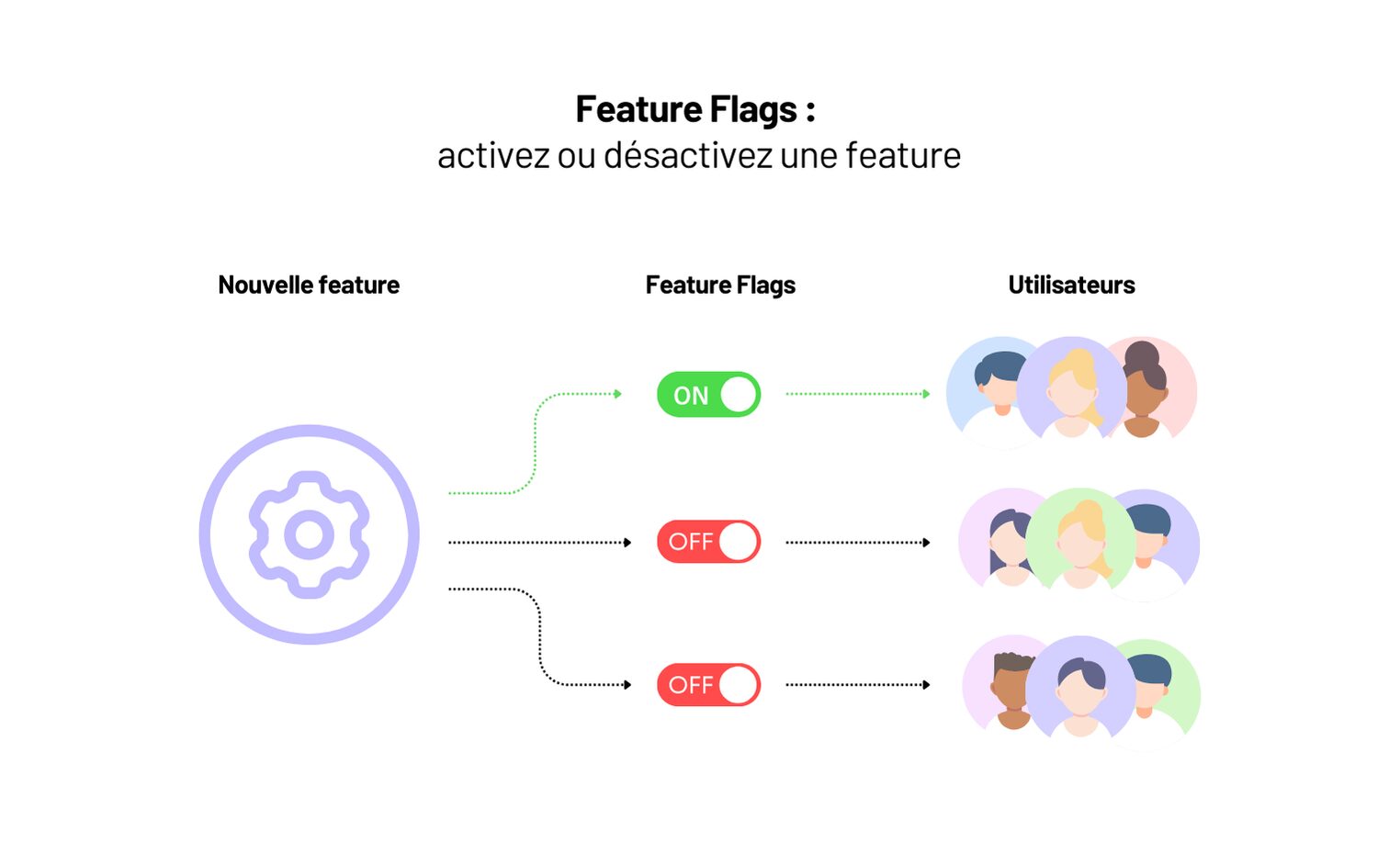Have you ever seen a production launch turn into a nightmare? Let's take a real-life example: a SaaS startup deploys a critical update to its search engine. On paper, everything is fine. During staging, no bugs were detected. But three hours after the launch, support explodes. Response times are up 35%, searches crash randomly, and users abandon the service.
The problem? Everything was deployed at once, without a safety net. No Canary Release, no Feature Flags, no rapid rollback. The technical team spent 48 hours in emergency mode trying to fix the problem before rolling back the situation. The result? A tarnished image, a loss of revenue, and a team at their wit's end.
And yet, this scenario could have been avoided. Putting business software into production isn't a finish line; it's a process. Test, adjust, monitor, learn. Those who understand this deliver quickly and effectively. The others exhaust themselves putting out fires.
In this article, we'll explore how to structure your releases to avoid cold sweats and deploy safely.

1. Define the production release strategy
Going live is all about pace, alignment with the product, and anticipating risks. Before even discussing tools or methodology, the first step is choosing the right deployment model.
Continuous delivery: speed and constant iteration
If you're aiming for an ultra-fast development cycle, continuous delivery is your best friend. As soon as a feature is ready, it goes into production. You reduce the time between code and user, and you collect feedback in real time.
Conditions for effective implementation:
- A robust CI/CD pipeline with reliable automated testing.
- Good feature slicing to avoid inconsistent deployments.
- Using Feature Flags to enable/disable features without redeployment.
Grouped releases: consistency and control of changes
Some features must arrive together to be usable. In these cases, a Release approach is more appropriate: accumulating developments and releasing them in a single production release, with a comprehensive testing and validation plan.
When to adopt this approach?
- If several features are interdependent.
- If regulatory constraints impose global validation.
- If the user impact is strong and requires prior communication.
2. Establish progressive control mechanisms
Feature Flags: Deliver without activating immediately
Feature Flags allow you to include a new feature in production code without immediately exposing it to all users.

Best practices:
- Use tools like LaunchDarkly or Split.io.
- Include a flag for any new feature before going into production.
- Maintain a backlog of active flags and disable them once they become obsolete.
Canary Releases: Test on a limited audience before rolling out to the general public
Rather than rolling it out to everyone at once, we start with a small segment of users. If all goes well, we gradually expand.
Key points:
- Start with a low percentage of users.
- Monitor key indicators: error rate, feedback.
- Plan for a quick rollback in case of a problem.
Blue-Green Deployment: A Smooth Switchover
This approach involves maintaining two environments (Blue: stable, Green: new version) and gradually redirecting traffic to Green.
Recommendations:
- Check database compatibility.
- Automate routing management.
- Have a clear rollback strategy.
3. Ensure continuous validation with business teams
A production launch isn't just about code. A collaborative approach between developers, testers, and users is essential.
Actions to be implemented:
- Test in staging with real users before going into production.
- Automate regression testing and functional validations.
- Implement performance and user experience KPIs.
Conclusion
Adopting a phased release strategy helps ensure a secure and efficient deployment. By combining practices like Feature Flags, Canary Releases, and Blue-Green Deployment, you minimize risk while ensuring an optimal experience for your users.
The important thing is to integrate these processes from the design phase and adapt them to your specific needs. With a structured approach, production launch becomes a lever for quality and performance, rather than a source of stress.

